chad jadc2 —
“Any sensor, any shooter” means extra preventing flexibility—and extra complexity.
Sean Gallagher –

Enlarge / A 3-ship flight of F-22 Raptors. As one of many US Air Power’s most subtle fighters, it would see fight sooner or later not towards insurgencies, however towards technologically subtle adversaries like China or Russia.
Stocktrek Photographs / Getty Photographs
With the warfare in Afghanistan within the rearview mirror, US navy planners are attempting to pivot towards a really completely different set of challenges than preventing the Taliban. Competitors with what Division of Protection officers have generally known as “close to friends” presents a set of recent challenges to a navy that has been centered for the previous twenty years on counterinsurgencies and terrorism. America needs to take care of its capacity to reply to nonstate, “uneven” adversaries whereas additionally determining learn how to combat nations which are America’s technological equals.
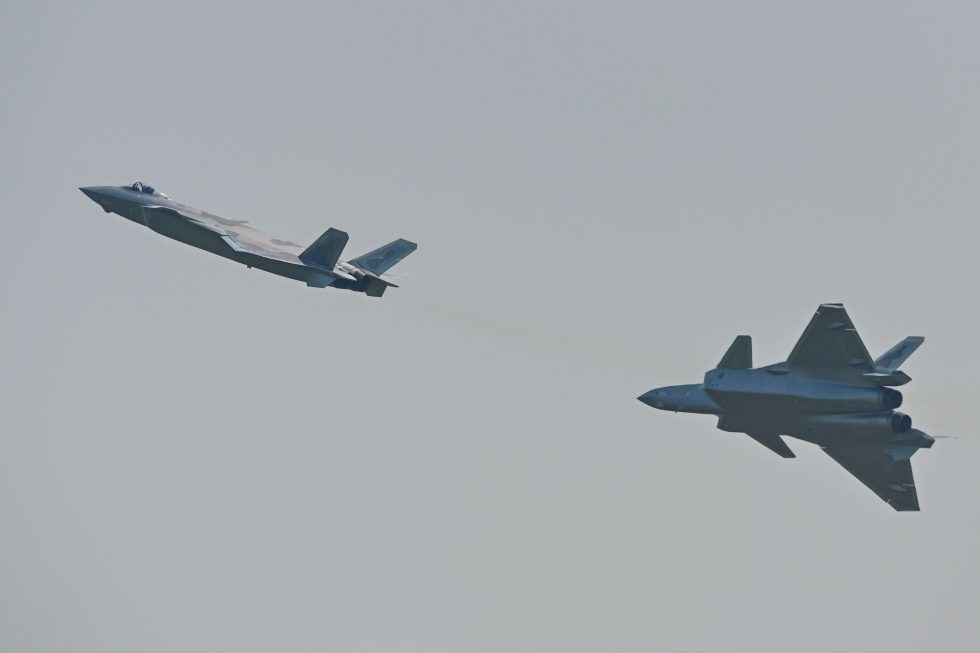
Enlarge / Two examples of China’s fifth-generation fighter, the Chengdu J-20, performing this yr on the thirteenth China Worldwide Aviation and Aerospace Exhibition in Zhuhai, China.
China Information Service / Getty Photographs
Within the synopsis of the 2018 Nationwide Protection Technique, DOD officers laid out the issues: an ascending China searching for “Indo-Pacific regional hegemony within the close to time period and displacement of the USA to attain international preeminence sooner or later” and an formidable Russia looking for “to shatter the North Atlantic Treaty Group and alter European and Center East safety and financial constructions to its favor”—with each nations utilizing data warfare and modernized standard and nuclear forces to flex their muscle tissues. This makes for a vastly completely different adversary than the sort the USA has been preventing for the final 20 years.
Responding to China’s quickly rising air and naval forces would require extra than simply higher ships and plane, too; the Folks’s Liberation Military (PLA) air pressure and navy are in some ways newer than their US counterparts and more and more comparable in functionality. There’s additionally the matter of the US having the ability to handle forces in an electromagnetically hostile atmosphere—filled with jamming, lively countermeasures, and potential intrusion and disruption of navy networks by different means. The Taliban did not have the aptitude to interact in subtle digital warfare towards the US—however China and Russia completely do.

Enlarge / Russia’s fifth-generation fighter, the Sukhoi SU-57, on the MAKS2021 Worldwide Aviation and House Salon in Zhukovsky, Russia.
Marina Lystseva / TASS / Getty Photographs
To fulfill these challenges, the Division of Protection is aiming to make operations all “joint.” Which means tearing down the partitions between the assorted US armed companies’ C4ISR programs (that unwieldy acronym stands for “Command, Management, Communications, Computer systems, Intelligence, Surveillance, and Reconnaissance”). The thought is to permit commanders in all branches of the navy to have a galaxy-mind view of all ranges of the battlefield—bodily, electromagnetic, and “cyber results.” This creates a greater “related battlespace.”
Particularly, the DOD want to attain “Joint All-Area Command and Management,” or “JADC2” (which one pronounces “jad-see-two”). The imaginative and prescient for JADC2 is a distributed community for information sharing and focusing on that hyperlinks each pleasant sensor within the battlefield with choice makers relating to what to shoot and the place—whether or not it is community protection, a “cyber impact,” or a weapon on a ship or an plane or a drone.
Into the wild blue yonder
On this piece, we’ll discuss a bit concerning the air fight implications and the way the JADC2 imaginative and prescient works with the Air Power—primarily as a result of the Air Power’s Superior Battlefield Administration System is essentially the most absolutely shaped of the DOD’s JADC2 efforts to this point. Conceptually, ABMS is an “Web of issues” that fuses information from fighter plane, drones, air protection sensors, and different supporting programs right into a single stream of information that (notionally, no less than) hastens choices and actions. Thus far, ABMS is usually a expertise demonstration (although largely a profitable one), with profitable communications exams and workout routines simulating a cruise missile assault and a Russian menace within the Black Sea. However in its absolutely realized kind, ABMS would construct upon capabilities which have already been demonstrated by current command-and-control programs, permitting all Air Power-y issues in a given fight space to behave collectively as a decentralized sensor and weapons community. It is form of like a cloud deployment, besides that the cloud is made up of fighter jets and their programs.
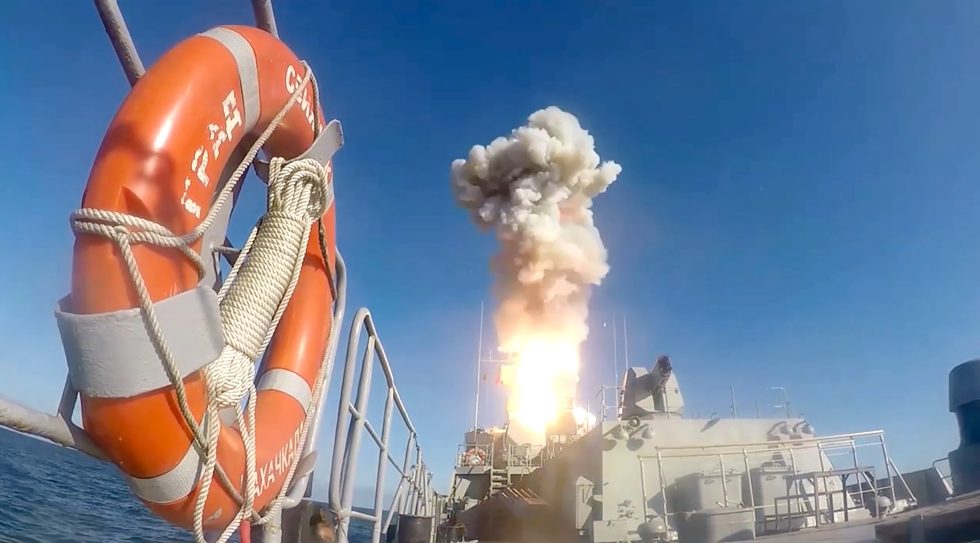
Enlarge / A Russian naval ship launching a Kalibr high-precision ship-based land assault cruise missile as a part of the Grom-2019 navy train held within the Barents Sea and the Caspian Sea. This {photograph} is from October 2019.
TASS / Getty Photographs
The purpose of this large fusion of all command and management (and all the pieces else) is to assist counter the “anti-access / space denial” capabilities being developed by China and Russia. These capabilities embody hypersonic long-range carrier-killer weapons, the militarization of synthetic islands within the South China Sea, and cyber warfare. Many of those capabilities are aimed squarely at stopping the US from utilizing provider teams and different means the DOD has lengthy relied on to challenge America’s navy energy removed from house. On the planet of JADC2, “air battles” or “sea battles” not exist—only one battle centered on very particular targets, and forces can be deployed in a coordinated style to achieve these targets as one.
There are some JADC2 doubters. JADC2 and ABMS hinge on US forces having the ability to successfully talk in an atmosphere the place the adversary makes doing so extraordinarily difficult. As one Air Power officer famous in a paper revealed in June by the Air Power’s Air College, the JADC2 idea would face enormous challenges if China invaded Taiwan and the US was pressured to reply. To be really efficient, the networks that JADC2 depends on should be proof against detection and jamming but in addition have the smarts inbuilt to squeeze large quantities of sensor, intelligence, and command-and-control information into simply what’s wanted to successfully make choices and combat battles.
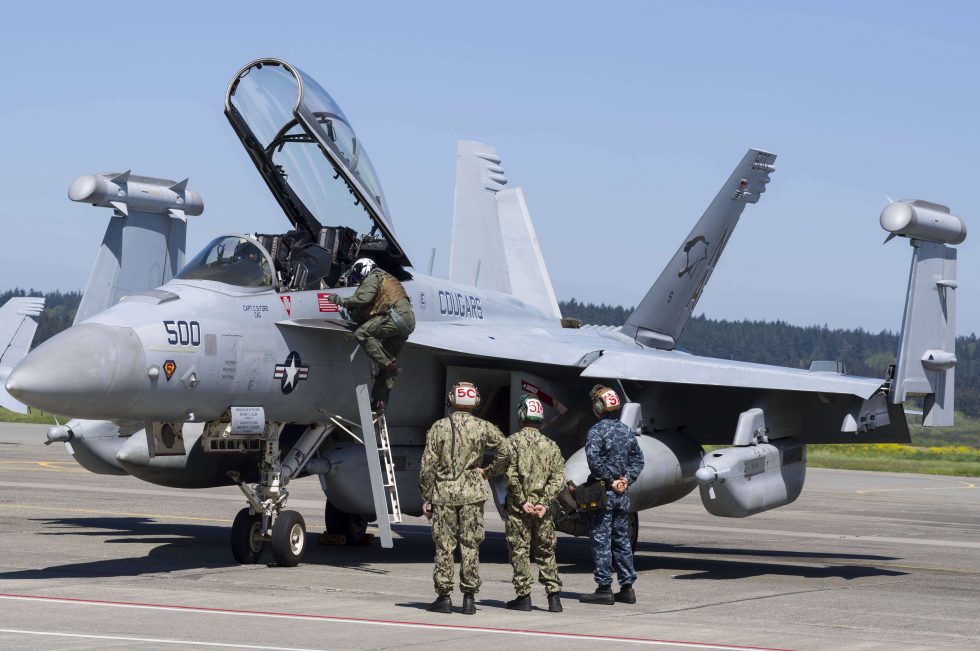
Enlarge / An aviator climbs aboard an EA-18G Growler, an digital warfare plane primarily based on the FA-18 Tremendous Hornet. The Growler’s job is to jam enemy radars, mess with their communications, suppress their air defenses, and launch radar-guided missiles at no matter it sees.
Smith Assortment / Gado / Getty Photographs
“Whereas high-level integration is a logical purpose, JADC2 as a stand-alone is a technically infeasible answer in a China-Taiwan situation given Chinese language capabilities which are designed to degrade or deny US networks and programs of programs,” wrote Capt. Esther Yoon. “[T]he most sturdy and sturdy communications programs is not going to face up to the sheer magnitude of kinetic and non-kinetic results directed at them… and whereas the purpose of linking numerous kill chain nodes seamlessly is sound, it shouldn’t be the tip in itself.”
Doubts have come from the highest as nicely. Although there was no change in coverage on JADC2 because the administrations change, there have been price range cuts. Secretary of the Air Power Frank Kendall is taking a look at redirecting this system away from the open programs structure the ABMS program has emphasised towards a spotlight “on particular operational return on funding,” he instructed Protection Information in an August interview.
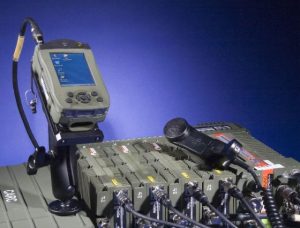
Enlarge / The Military’s canceled Floor Cell Radio.
One other problem: pulling off the imaginative and prescient of an “open” system like JADC2 on the earth of navy procurement, which tends to go astray when not buying particular merchandise. Earlier packages, just like the JTRS radio household and the Distributed Floor System (and the F-35, for that matter) have ended up within the weeds due to service-specific wants, overspecification of requirements, and consistently altering necessities. However specializing in level merchandise as an alternative of a totally unified system might find yourself making issues worse if the method is not correctly managed.
No matter kind ABMS and JADC2 take, they’ll inevitably change how the Air Power (and DOD as a complete) plan and perform air missions. To know what that change may appear to be, let us take a look at what the Air Power has tried to take action far, each in expertise and in doctrine.
“F-22 has joined the chat”
Simply getting all the pieces to speak to one another is a big hurdle, which is why the Air Power’s earliest exams associated to ABMS have been largely centered on getting programs talking a typical language primarily based on the Unified Information Library, a cloud API for exchanging data throughout navy and industrial programs. Which means having a way for the proprietary networks related to current plane to speak—the F-22 and F-35, for instance, haven’t been in a position to share information instantly apart from by means of rudimentary information hyperlinks.

Enlarge / An F-22 Raptor. Word the “sawtooth” edging and lack of proper angles the place physique panels join—proper angles mirror radar waves again at their supply, so if you would like good stealth traits, you keep away from them.
rancho_runner / Getty Photographs
The Air Power is engaged on a solution: turning KC-46 Pegasus tankers into ABMS “hotspots” with communications pods that permit F-35s and F-22s alike to hyperlink and obtain a lot larger information feeds from one another and each different node of the ABMS community. That features ships and floor forces. In a single ABMS “Onramp” check, plane have been in a position to cross focusing on data for a drone taking part in the position of a cruise missile to an Military M109 Paladin self-propelled gun, which fired a hypervelocity projectile and efficiently shot down the drone. Air Power Assistant Secretary for Acquisition Will Roper gushed concerning the check on the time, telling reporters, “Tanks taking pictures down cruise missiles is superior—online game, sci-fi superior.” (With all due respect to Roper, the Paladin isn’t a tank.)
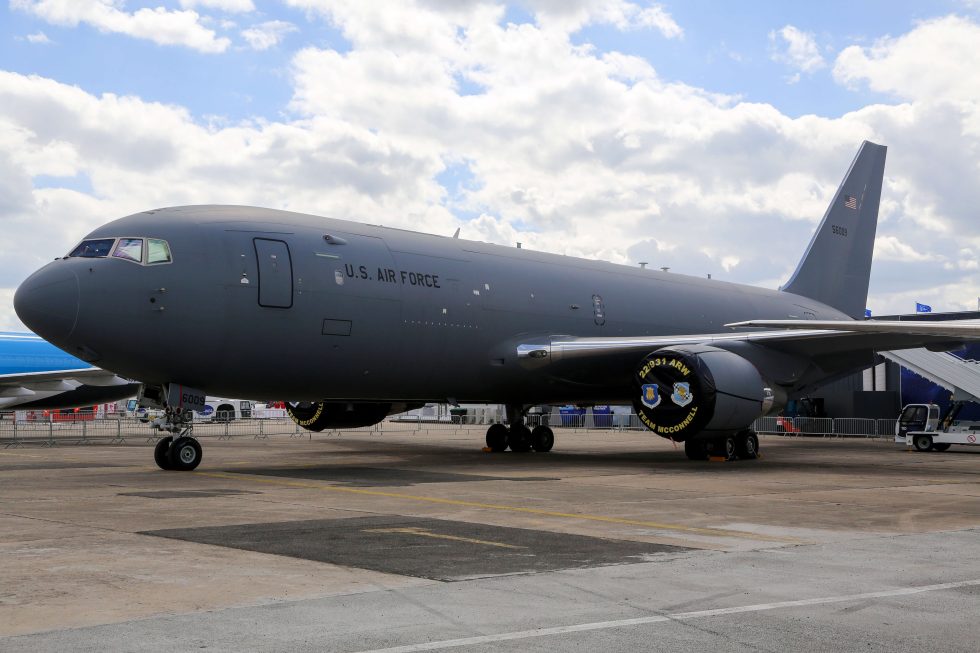
Enlarge / A Boeing KC-46 Pegasus tanker on the 2019 Paris Air Present. Based mostly on the 767 platform, the KC-46 has had a rocky improvement historical past.
Nikolai Novichkov / Getty Photographs
The mantra of JADC2 and ABMS appears to be “any sensor, any shooter.” On this schema, a radar on an F-35 might be used to cross focusing on information to a self-propelled gun (and even, sure, a tank)—or an Aegis radar system on a Navy destroyer might do the identical for an F-22, or a land-based air protection battery, or an Air Power “loyal wingman” fight drone (or to that tank once more). This could erase the system-enforced obstacles between air, land, and sea operations and permit a navy commander to fireside a shot at something they will see with any weapon obtainable.
However as with all the pieces within the navy, simply having that functionality does not matter with no doctrine. (And a complete mess of Powerpoint shows, however we’ll skip these, fortunately.)
The doctrine
An October 2020 doctrine publication from the Air Power’s Curtis LeMay Heart for Doctrine and Training spelled out the Air Power’s imaginative and prescient of what operations powered by JADC2 can be able to, no less than on paper:
- Gaining data benefit
- Projecting international fight energy
- Synchronizing motion in, from, or by means of all domains to achieve and preserve theater entry
- Overmatching adversary forces at decisive factors
- Preserv[ing] fight functionality to conduct future operations
The “data benefit” piece of the puzzle depends on ABMS and different JADC2 programs not simply gathering and sharing information, however turning that information into no matter kind is required in every single place within the “kill chain.” Which means displaying information on ABMS screens in air operations and command facilities, on the cockpit shows of plane, and in scores of supporting purposes on the edges. These supporting purposes do all the pieces from telling flight crews which weapons to load to gathering and synthesizing sensor information on web site to share throughout the Air Power’s (and companions’) networks. Every display screen would present the knowledge its operator wants within the format that makes essentially the most sense.
The adjustments begin on the mission-planning stage. Air mission planning would not imply simply plane mission planning however would additionally embody planning all digital warfare and cyber “results,” sensor and intelligence asset tasking, and joint and allied pressure help. The JADC2 idea of operations would create a distributed method to operations planning as nicely, permitting commanders to share their intent and priorities with subordinates who would use the knowledge at hand to take motion. On the similar time, returning flows of knowledge from all sources would permit commanders to see the entire image of the battle in a single place and to find new data sooner to regulate the overarching operational plan.

Enlarge / A B-2 stealth bomber, trailed by 4 F-22s. The B-2’s sawtooth tail helps reduce its radar cross-section. Beneath the JADC2 doctrine, these planes can do all types of untamed digital issues collectively.
Rob Kim / Getty Photographs
In joint all-domain operations, instruments like simulations and analytical fashions—fed with constantly up to date sensor and intelligence information—would in concept permit commanders to “harness the present functionality of the joint pressure to each surveil extensively, and focus their gaze narrowly,” because the Air Power’s doctrine doc places it. Commanders might zoom-in on particulars flagged by analytics as needing particular consideration, whereas nonetheless sustaining a bigger operational image. And these particulars might shortly be shared with subordinate models, proper all the way down to particular person plane or troopers—no less than so long as the community stays up and the info packets move.
All of this can basically change what commanders have to know and the way they assign their forces. As an alternative of making an “air tasking order,” the longer term joint commander should create an “built-in tasking order” that accesses all the capabilities throughout all obtainable navy forces in land, sea, and air—in addition to plans for mutual help and “opportunistic convergence” of operations, to borrow from the doctrinal language.

Enlarge / Aboard an Airborne Warning and Management Programs (AWACS) plane in 2019. AWACS plane carry huge radars into the battlefield and supply allied forces with an enormous built-in image of what is going on on.
Anadolu Company / Getty Photographs
Whereas the distributed nature of the community permits for distributed collaboration, planning and advance preparation will nonetheless need to be thorough in order that the delegated bits of an operation proceed even when communications are degraded. Situations might be set for computerized delegation of command within the occasion of a break in elements of the community chain (recall China’s and Russia’s capabilities to disrupt or jam US communications). And there is additionally the planning for the “authorized and coverage implications” of all elements of the operation.
Once more, in concept, JADC2 would permit commanders to quickly modify or cancel execution of plans, steadiness efforts primarily based on outcomes, and do all types of different real-time-strategy-game-esque issues. All of this really results in an extended mission-planning cycle for operations, “however these inefficiencies are outweighed by elevated adaptability and suppleness of the pressure,” based on Air Power doctrinaires.
On the execution aspect, JADC2 would (in concept) make it potential (when the hyperlinks are all up) for all of the actors to coordinate their actions—each of the deadly and non-lethal selection. Commanders might monitor circumstances to alter the timing of operations, reassign property, or abort the missions because the state of affairs dictates in near actual time. In concept, this might assist make issues occur so shortly that the adversary’s personal decision-making course of loop is overwhelmed, placing our foes on their heels.
Overcoming complexity
One part of JADC2 that has but to see wide-scale testing can also be the identical part that does quite a lot of heavy-lifting within the above doctrine: synthetic intelligence. Within the JADC2 scheme, people nonetheless make the choices, however that decision-making is aided and accelerated by machine-learning algorithms, simulation fashions, and different large-scale data programs that scale back the inherent complexity of all the info and the communication required to do collaborative warfighting on this scale towards an adversary as superior as a China or Russia.
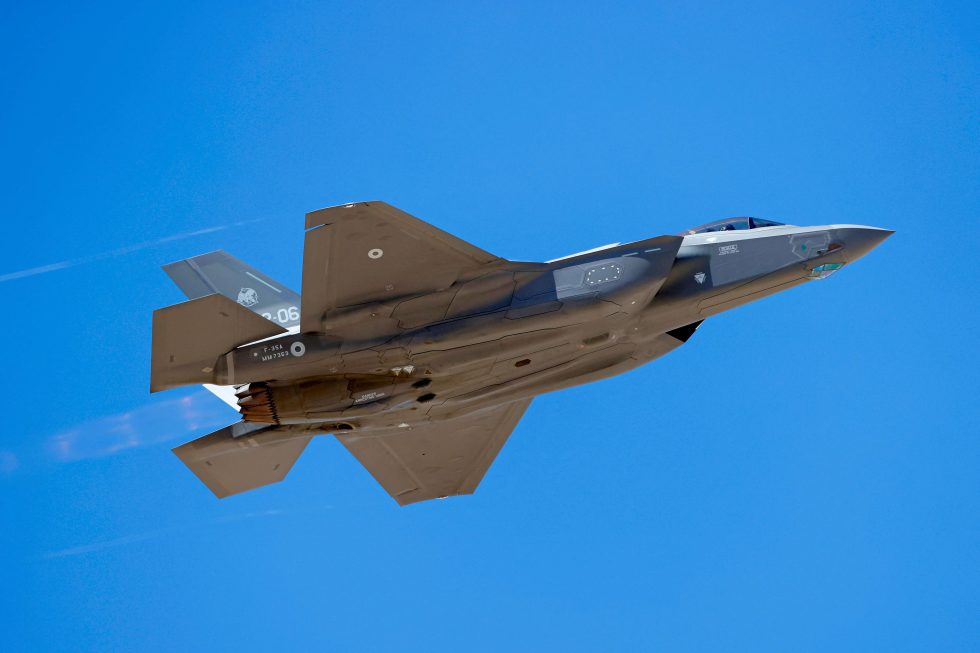
Enlarge / An Italian F-35 in flight (in contrast to the F-22, the F-35 is exported by the US to allied nations’ air forces). Word once more the sawtooth sides on the physique panels—these are one of many secrets and techniques to screwing up an enemy’s radar returns.
Jack Guez / Getty Photographs
Higher communications and data-sharing are important for any future battle. However a number of the critics of JADC2 are pushing for applied sciences that attempt to take people out of the equation solely. Whereas handing off issues to robots may appear to be a extra sensible approach to take care of the dimensions of menace the navy now prepares to combat, there are issues about AI and machine studying which are inherently dangerous—particularly in the case of placing AI in issues that may take down networks, destroy programs, and kill folks. The space between “loyal wingman” and “rogue killer robotic” isn’t nice sufficient to disregard if the navy shifts from the unique JADC imaginative and prescient towards extra autonomous decision-making programs.
Given the event struggles that different main “game-changing” joint DOD efforts have encountered, nonetheless—just like the perpetually overdue and over-budget F-35 and the gone-but-not-forgotten JTRS—we could don’t have any purpose to concern a robotic rebellion any time quickly. It is extra doubtless that JADC2’s last kind will find yourself being extra incremental and evolutionary than revolutionary, notably given DOD’s issues with AI improvement. We most likely will not see last expertise within the near-future, but it surely’s on the way in which.

